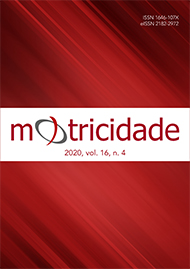Association between Quality of life, Sleepiness, Fatigue, and Anthropometric Parameters in young University Students
DOI:
https://doi.org/10.6063/motricidade.18747Abstract
Cardiovascular risks are now an epidemiological reality among adults and teenagers. This scenario leads to impairments in quality of life and represents a burden in healthcare and government costs. This study aimed to evaluate the association between risk factors for cardiovascular diseases, quality of life, daytime sleepiness, fatigue, and anthropometric parameters on university students in Fortaleza/CE, Brazil. It was a descriptive, crossectional, correlational study, made through epidemiological assessment in young university students, with primary data and quantitative analysis. The results showed a negative influence of daytime sleepiness and fatigue on the overall quality of life. Functional capacity, a component of the quality of life, which represents the ability to perform tasks and activities in their life, and limitations due to emotional aspects could impact a person's well-being and health. Moreover, excessive daytime sleepiness showed a strong correlation with almost all domains of quality of life. It was found that although volunteers did not show a low quality of life, fatigue levels and sleepiness presented as relevant variables. There is a need to comprehend and control these variables to promote students' health and, consequently, to live healthier adulthood.
Downloads
Published
Issue
Section
License
The authors of submitted manuscripts must transfer the full copyright to Journal Motricidade / Sílabas Didáticas Editions. Granting copyright permission allows the publication and dissemination of the article in printed or electronic formats, and copyrights start at the moment the manuscript is accepted for publication. It also allows Journal Motricidade to use and commercialise the article in terms of licensing, lending or selling its content to indexation/abstracts databases and other entities.
According to the terms of the Creative Commons licence, authors may reproduce a reasonable number of copies for personal or professional purposes, but without any economic gain. SHERPA/RoMEO allows authors to post a final digital copy (post-printing version) of the article on their websites or on their institutions' scientific repository.


